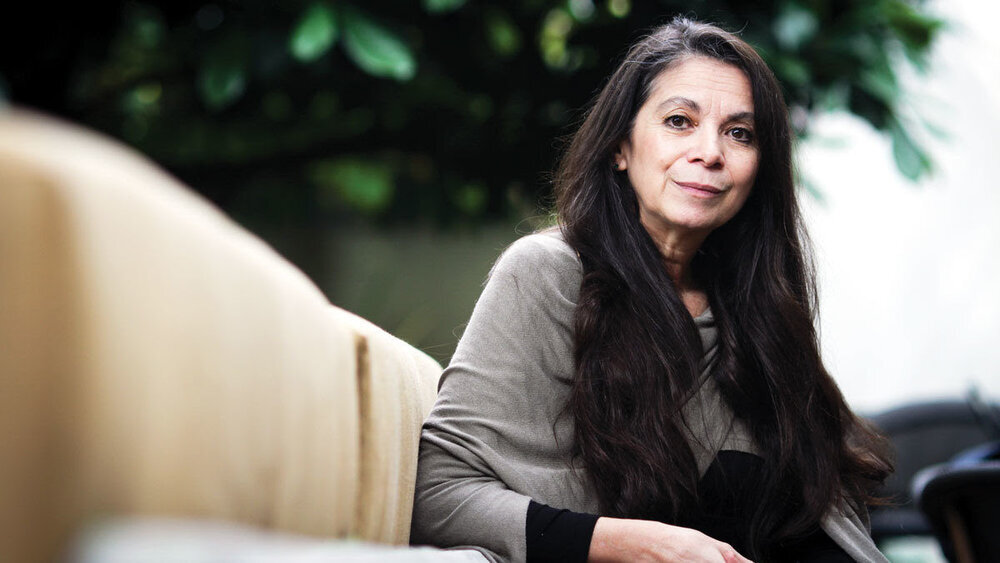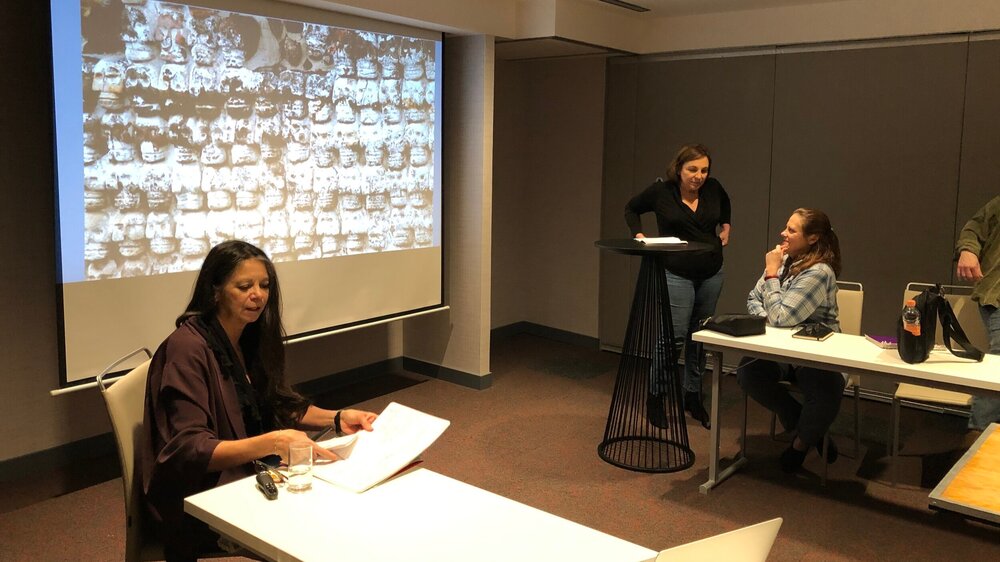Remembering and Imagining with Carmen Boullosa
April 24, 2020
by Jocelyn Holmes, Cohort ’18
“We’ll save language and the memory of man, and one day we'll shape the hand that will tell our story…” – Carmen Boullosa, Heavens on Earth

Carmen Boullosa. Image Source.Carmen Boullosa, a leading Mexican novelist, poet, and playwright graciously shared her time and rich insights at the inaugural IDSVA winter residency in Mexico City in January 2020. Boullosa’s voice as an artist-philosopher evokes reflection on the past and reconsideration of the present as she invites us to imagine possible futures. Boullosa’s Mexico City lecture mirrored the narrative style she employs in her writing.
In her lecture, Boullosa’s personal narrative of becoming unfolded by contextualizing the complex social, economic, political, and ecological conditions of Mexico City that informed her Being. Boullosa demonstrated that, while her young life was impacted by a culture steeped in ideals rooted in machismo, patriarchy, and Catholicism, she denied these hegemonic systems from solely informing or limiting who she might become. As a young girl, Boullosa discovered matriarchal examples of strength and independence in figures such as her grandmother, the traditional China Poblana dancers, and the ancient images of Aztec goddesses. Each of these examples enabled Boullosa to imagine possible expressions of feminine Being.
.jpeg)
Boullosa’s talk recounted memories of the Mexico City of her childhood demonstrating how archaeological artifacts, such as the ancient stone sculpture of the female Aztec deity Coatlicue, provided a sense of ancestral connection for the citizens of the city and personally instilled her with a sense of pride for her own feminine identity. The imposing and majestic sculpture of primordial earth goddess Coatlicue, inspires awe as her figure teems with undulating serpents which weave her intricate skirt and conjoin to reform the goddess's dismembered head and hands which were sacrificed for creation. Boullosa’s insights into Mexico’s history served as an invaluable frame for the IDSVA residency experience as students embraced the rich cultural heritage of the region and indulged in their own experiences including a visit to the Museo Nacional de Antropología in Mexico City and a chance to marvel at the fearsome goddess Coatlicue.
Boullosa’s narrative and poetic prowess is further evident in her book Heavens on Earth, originally published in 1997 and translated into English for the first time in 2017. In her writing, Boullosa weaves together fable and historical analysis with distinctive elements of both critical and speculative fabulation. She asks the reader to bear witness to the past by considering the effects of Spanish colonial violence on Mexico's indigenous population while considering the future implications of such ecological and social atrocities. Heavens on Earth invites an imagining of a possible future by creating a dialogue between past and future through a plurality of character’s voices. The character Lear is an archeologist of the future who discovers the secret autobiography of Don Hernando, a 16th century Aztec priest whose writing has been translated from its original Latin form by Estela, a 20th century anthropologist. Through the interplay of Hernando’s voice from the past, and Lear’s voice of the future, the reader remains in the middle as Boullosa causes consideration of our present responsibility for the future.
The future Boullosa imagines is told through the eyes of Lear who inhabits L’Atlàntide, a utopian society suspended in the earth’s upper atmosphere where everything is made of air. In Lear’s time, humankind has destroyed itself, the earth, and time with violence indicative of the Capitalocene—a distinct geological time in which accumulation for accumulation’s sake has damaged the planet’s environment. Lending us her voice from the future, a time beyond “the time of man,” Lear’s post-apocalyptic world offers a vision or possible warning of a future in which man's consumeristic appetites have ravaged the earth, precipitating ecological disasters and rendering the earth uninhabitable. Lear’s world seeks to destroy the relics of earthly writing and replace spoken language with numerical and gestural communication. Fearing the loss of histories such as Hernando’s and voices of the past such as Estela’s, Lear expresses her unwillingness to acquiesce to the demands of her own civilization by stating, “I’m going to try to transform myself into words and jump into the realm I can share with Estela and Hernando. [...] The three of us will devote ourselves to remembering. [...] We’ll save language and the memory of man, and one day we'll shape the hand that will tell our story…” (Boullosa, Heavens on Earth 385, 386). Lear finds a means of resistance in becoming words in order to preserve language so that the future might continue to learn from the histories of man.

Through both her lecture and writings, Boullosa invites us to learn from the past, to think, and to address the damage that ecological and social violence enacts on our possible futures. By questioning equity and erasure, Boullosa demonstrates the importance of language, interpretation, and learning from our histories. Through the power of storytelling, Boullosa’s history and memories become a portal to the past, connecting and centering us as beings, thus challenging us to take responsibility for the future we want and imagine for our world.
Through both her lecture and writings, Boullosa invites us to learn from the past, to think, and to address the damage that ecological and social violence enacts on our possible futures. By questioning equity and erasure, Boullosa demonstrates the importance of language, interpretation, and learning from our histories. Through the power of storytelling, Boullosa’s history and memories become a portal to the past, connecting and centering us as beings, thus challenging us to take responsibility for the future we want and imagine for our world.
